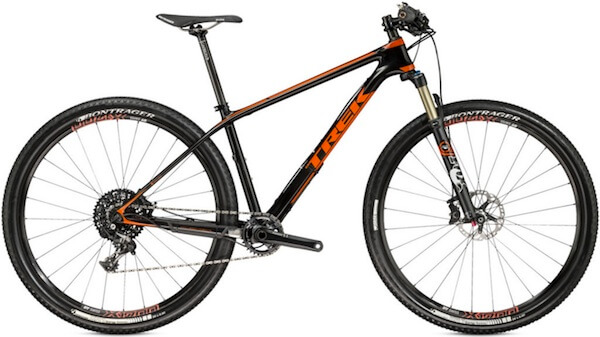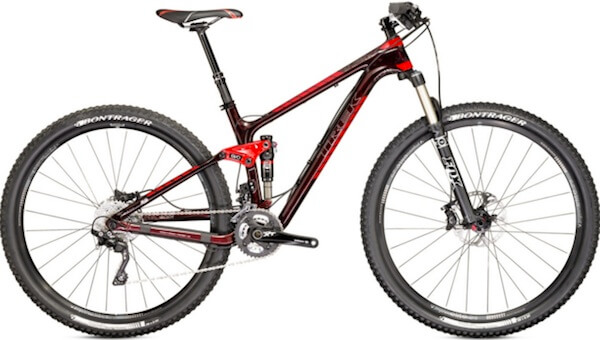Bikes are miracles of technology and on the mountain bike side of them, truly out of this world with what can be done to improve ride performance over technical terrain. The suspension on a mountain bike, front or rear, has dramatically improved the way bikes handle over rocks, roots, and drops, as well as how harsh the ride is on your body.
As with any technology though, it has to be the best for you, your riding ability, and your pocket. Deciding between a hardtail and full suspension mountain bike can be tough if you don’t know what you’re looking for and what the benefits and drawbacks of each are.
The Hardtail

A hardtail mountain bike is exactly what it sounds like. Hard in the back meaning it only has a front suspension on the fork while the rear is just your normal bike frame. There are a number of benefits to a hardtail that make it the best mountain bike for a cyclist.
Price
The price of a hardtail is going to range from a little bit cheaper to substantially less depending upon the quality of each. When you first get into something new you don’t want to drop top-dollar on it but rather want something to get your feet wet and see what it’s all about. This is where hardtails have a big draw. You can get a feel for what type of riding you like and where exactly you would like to spend your money for an upgrade.
Simple
Part of what makes a hardtail cheaper is the simplicity of it and lack of a lot of parts. Full suspension bikes have a lot more things that move and need maintained and that can break. When you have a simple bike it is much easier to maintain, keep clean, and not have a lot of over-the-top things that you need to know to keep your bike working smoothly.
Weight
With the added parts of a full suspension comes more weight. The stripped down simplicity of a hardtail keeps the weight to a lighter, more manageable level at the lower end where most people start out in mountain biking.
Drawbacks
The main drawback to a hardtail is that the bike doesn’t absorb all the bumps and can bounce around a lot causing things to be difficult to ride as well as uncomfortable. Generally for a beginner, less skill adept rider, they are not going to be going over large rocks and obstacles that a full suspension can otherwise help with. The smaller bumps though in terms of a comfort level will be more harsh on your body leaving you “feeling it” especially after a longer, rockier ride.
Benefit
One great pro for starting out with a hardtail vs a full suspension is the fact that it will teach you to pick your lines better and more carefully as you will not be able to take hit the bumps as much. If you start out with a full suspension mountain bike it is possible that you will develop worse habits.
The Full Suspension

A full suspension mountain bike comes with several advantages over a hardtail. The bike rides differently and can tackle much more terrain while also giving a higher comfort level by taking away a lot of the small vibrations a hardtail can leave you with.
Price
With all the added parts as well as higher end technology comes a higher price. You do however get what you pay for and that price differential may leave you wondering how you rode a hardtail for so long.
Weight
Also with the added parts comes more weight but it’s a necessity as the shocks and added frame material to support the suspension system are essential to delivering a functional ride over technical terrain.
Riding Ability
This is really where the added suspension comes to give an exceptional ride. As you go over a rock or other obstacle, the bike is going to absorb the impact by compressing the shock which leaves your contact points with the bike, and thus you, in a more level and stable position. On a hardtail that same bump would be transferred through the bike to you causing you to be forced upward. With the bike absorbing the impact, both wheels also stay planted better on the ground leaving you with more traction and control. Also, as you go off a drop, the suspension will help absorb the impact and better keep you upright on the trail.
Riding Comfort
Comfort on a full suspension mountain bike will also be drastically improved as, after fit, how bumpy a ride is will determine how comfortable you are. A full suspension mountain bike will absorb a lot of the small bumps instead of transferring them through the bike to you. On most suspension systems you can adjust how much ‘give’ there is so if you’re climbing it’s not bouncy all the way up with each pedal revolution and then if you’re going down a bumpy trail you can allow the shock to compress further and absorb the bigger ‘hits’.
Hardtails and full suspension mountain bikes both come with their pro and cons but where those fall relative to your riding will determine which one is right for you right now. You may start on one and find things you like about it and things you don’t so fortunately there are qualities that can be changed in both to better match the bike you’re riding, to the riding that you want to do. Hardtails are a great place to start and whether you upgrade to another hardtail or a full suspension, make sure to enjoy the ride.